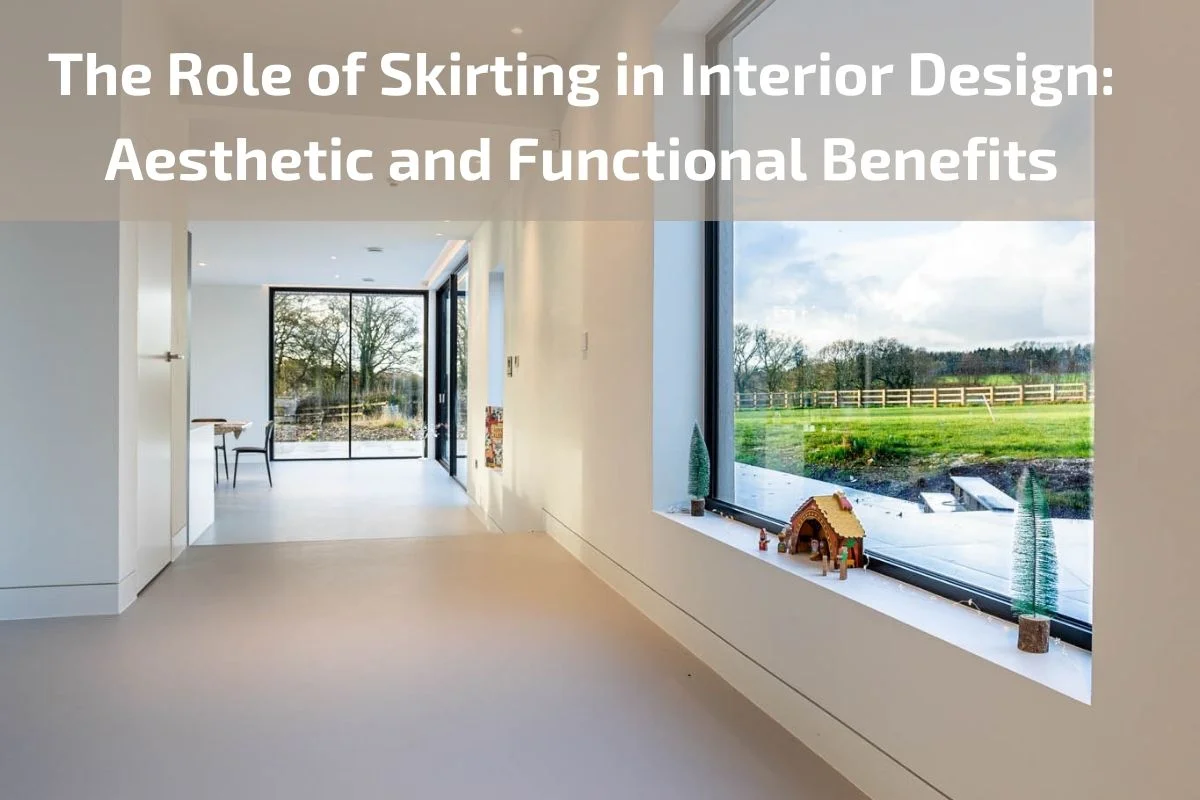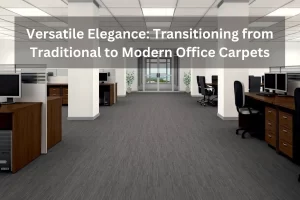In the intricate dance of design, where every element contributes to the harmony of a space, skirting emerges as a silent conductor, orchestrating both aesthetic finesse and practical functionality. Often residing in the periphery of our attention, skirting boards play a fundamental role in transforming a mere structure into a visually cohesive and well-defined environment.
Skirting, also known as baseboards, has transcended its humble beginnings as a mere junction concealer between walls and floors. Today, it stands as a key player in interior design, offering a canvas for artistic expression while fulfilling essential functions. This exploration delves into the dual nature of skirting, unravelling its aesthetic significance in shaping the character of a space and its pragmatic role in maintaining the integrity of interior architecture.
Brief overview of skirting’s role in interior design
Skirting, also known as baseboards or base molding, plays a crucial role in interior design by serving as the finishing touch that seamlessly integrates walls and floors. Beyond its practical function of concealing the joint between these two surfaces, skirting contributes significantly to the overall aesthetic of a space. Acting as a visual transition, skirting frames the room, providing a polished and cohesive appearance.
This often-overlooked design element comes in various styles and materials, allowing for customization to suit different interior aesthetics. Skirting boards have evolved from a mere functional necessity to an expressive feature that adds character and definition to a room. Whether enhancing architectural details or contributing to a specific design theme, skirting proves to be a versatile and impactful component in achieving a well-designed and harmonious living space.
Skirting, also known as baseboards or base moulding, plays a fundamental role in interior design by serving as the finishing touch that brings cohesion and aesthetic finesse to a space. Functionally, skirting conceals the joint between walls and floors, providing a seamless transition and covering gaps that might otherwise be unsightly. Beyond its practical purpose, skirting has evolved into a design element that contributes to the overall aesthetic appeal of a room.
Skirting serves as a unifying feature, connecting various design elements within a space. It frames the base of walls, defining the boundaries and contributing to the architectural character of a room. The choice of skirting style can significantly impact the visual perception of height and scale, influencing the overall ambiance.
In addition to its aesthetic contributions, skirting also plays a practical role in protecting walls from potential damage caused by everyday wear and tear. It acts as a barrier, preventing scuffs, scratches, and abrasions that can occur in high-traffic areas. Moreover, skirting provides a functional cover for cables and wiring, helping maintain a clean and organised appearance.
Ultimately, skirting’s significance lies in its ability to marry form and function seamlessly. It is a subtle yet impactful element that enhances the visual appeal of a space while fulfilling essential practical purposes, making it an integral part of thoughtful interior design.
Types of Skirting
Skirting flooring boards come in various styles and profiles, each contributing to the overall aesthetic of a space. Here’s an overview of common types of skirting:
Plain or Straight-Edge Skirting:
- Clean and simple design with a straight, flat profile.
- Versatile and suitable for both traditional and contemporary interiors.
Chamfered Skirting:
- Features a bevelled edge, adding a subtle decorative touch.
- Offers a classic look that complements a range of interior styles.
Ogee Skirting:
- Characterised by an S-shaped profile, adding a touch of elegance.
- Often used in more traditional or ornate design schemes.
Bullnose Skirting:
- Rounded or half-rounded profile without any sharp edges.
- Creates a softer, more modern look, ideal for contemporary spaces.
Lambs Tongue Skirting:
- Features a curved top that resembles the shape of a lamb’s tongue.
- Adds a classic and sophisticated touch, popular in traditional interiors.
Torus Skirting:
- Rounded convex moulding with a semi-circular profile.
- Blends well with various design styles and adds a subtle decorative element.
Victorian Skirting:
- Ornate and highly decorative, often featuring intricate patterns.
- Reflects the opulence and detailing characteristic of the Victorian era.
Square-Edge Skirting:
- Straight and angular with a modern, minimalist design.
- Well-suited for contemporary and industrial-style interiors.
Routed Skirting:
- Features decorative grooves or patterns along the surface.
- Adds texture and visual interest, enhancing the overall design.
Receded Skirting:
- Horizontal grooves or ridges running along the length of the board.
- Provides a subtle yet distinctive decorative element.
Benefits of Skirting
Skirting boards, often overlooked but integral to interior design, offer a multitude of benefits that go beyond their apparent simplicity. Here’s a closer look at the advantages of incorporating skirting into your living spaces:
Enhanced Aesthetics:
- Skirting boards contribute to a finished and refined look, acting as a visual border that completes the overall design of a room.
Seamless Integration:
- They provide a harmonious transition between different surfaces, such as walls and flooring, creating a cohesive and unified appearance.
Height Definition:
- Skirting can influence the perceived height of a room, especially when carefully chosen to complement the overall design, giving the space a more proportionate feel.
Concealing Imperfections:
- Skirting boards cover gaps and uneven edges, concealing minor flaws and imperfections along the base of walls for a smoother, more polished finish.
Protection Against Damage:
- Acting as a protective barrier, skirting guards walls from potential damage caused by furniture, vacuum cleaners, and general wear and tear.
Cable Management:
- They serve a practical purpose by concealing unsightly wires and cables, maintaining a neat and organised appearance within the room.
Facilitates Cleaning:
- Skirting boards create a barrier that prevents dust and debris from accumulating in the gap between walls and floors, making cleaning more manageable.
Design Flexibility:
- Available in various styles, materials, and finishes, skirting boards offer design flexibility, allowing customization to match different interior styles and colour schemes.
Insulation and Energy Efficiency:
- By covering gaps, skirting contributes to insulation, helping regulate temperature and reduce drafts, thus enhancing energy efficiency.
Personalization Opportunities:
- Skirting can be painted or stained in different colours, providing an opportunity for personalization and creative expression in interior design.
Sound Absorption:
- Skirting boards can contribute to sound dampening, absorbing and minimising noise, thereby enhancing the overall acoustics of a room.
Maintenance Tips for Long-Lasting Skirting Appeal
Maintaining the long-lasting appeal of skirting floor boards is crucial for preserving their aesthetic and functional integrity. Here are some practical maintenance tips to ensure your skirting remains in top condition:
Regular Cleaning:
Dust and wipe down skirting regularly using a soft, damp cloth or a mild cleaning solution. This prevents the accumulation of dirt and maintains a clean appearance.
Avoid Harsh Chemicals:
When cleaning, avoid harsh or abrasive chemicals that could damage the finish or material of the skirting. Opt for gentle cleaning agents that are suitable for the specific material.
Careful Vacuuming:
When vacuuming the floor, use a soft brush attachment to prevent accidentally scratching or damaging the skirting boards. Pay attention to corners and edges where dust tends to collect.
Prompt Spill Cleanup:
Accidental spills should be promptly cleaned to prevent staining or warping of the skirting. Use a damp cloth to wipe away spills, especially if they involve liquids that could potentially damage the material.
Check and Tighten Fixings:
Periodically check for any loose or protruding nails or screws in the skirting. Tighten or replace them as needed to ensure the skirting remains securely attached to the wall.
Inspect for Damage:
Regularly inspect the skirting for any signs of damage, such as chips, dents, or cracks. Address any issues promptly to prevent further deterioration.
Touch-Up Painting or Staining:
If the skirting is painted or stained, be prepared to touch up these finishes as needed. This helps maintain a consistent appearance and protects the material from environmental factors.
Protect During Renovations:
During home renovations or painting projects, take measures to protect the skirting from accidental splatters or damage. Cover them with protective materials or remove and reinstall them after the work is completed.
Humidity Control:
Maintain a consistent indoor humidity level to prevent warping or swelling of wooden skirting boards. Sudden changes in humidity can affect the stability of the material.
Professional Inspection:
Consider periodic professional inspections, especially in high-traffic areas. Professionals can identify and address any underlying issues that may affect the longevity of the skirting.
Conclusion
In the intricate world of interior design, where every detail contributes to the overall aesthetic and functionality of a space, skirting boards emerge as unsung heroes, weaving together form and function. As we conclude our exploration into the role of skirting in interior design, it becomes evident that these often-overlooked elements play a vital part in creating spaces that are not only visually appealing but also enduring in their charm.







